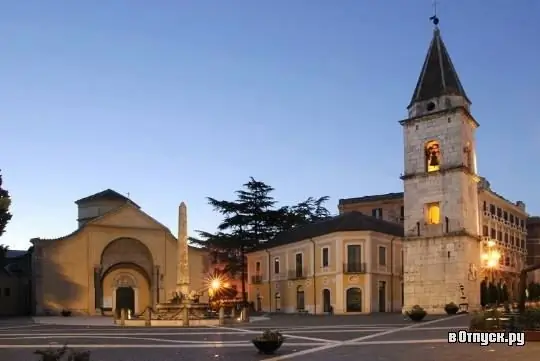
Description of the attraction
Santa Sofia is a church in the town of Benevento in the Campania region of Italy, one of the best-preserved examples of Lombard architecture. In 2011, it was included in the list of UNESCO World Heritage Sites in the nomination “Lombards in Italy. Places of Power (568-774).
The church was founded by the Lombard ruler Arekis II around 760, as evidenced by numerous documents, some of which are kept in the nearby Samnite Museum. It was built in the image of the Palatine Chapel in Pavia, and after the defeat of King Desiderius and the fall of the Lombard kingdom in Northern Italy, it became the main church of the Lombards, who took refuge in the Duchy of Benevento. Arekis II dedicated the temple of St. Sophia (like Hagia Sophia in Constantinople), and also added a Benedictine convent, which was subordinate to the Montecassino abbey and was ruled by his sister Gariperga.
Santa Sofia was severely damaged during the earthquakes of 1688 and 1702, when the original dome and some medieval elements were destroyed. At the beginning of the 18th century, by order of Cardinal Orsini, future Pope Benedict XIII, the church was restored in the Baroque style. The work, which began in 1705, changed the plan of the church from star-shaped to round, at the same time two side chapels were added and the appearance of the apse, facade and ancient columns was changed. Subsequently, the frescoes that adorned the interior of Santa Sofia were almost completely destroyed - only a few fragments depicting scenes from the life of Christ and the Virgin Mary have survived to this day. Fortunately, in 1957, on the basis of historical documents, another reconstruction was carried out, which returned the church to its original appearance (with the exception of the baroque facade with the Romanesque portal, which remained intact).
Today, inside Santa Sophia, in the very center, you can see six columns, possibly taken from the ancient Temple of Isis, which, with the help of arches, support the dome of the church. Among the works of art that adorn the church, one can distinguish the 13th century bas-relief in the portal lunette and the same frescoes of the 8-9th centuries. The bell tower was built on the initiative of Abbot Gregory II - it collapsed in 1688 and was rebuilt in 1703 in another place. Also noteworthy is the 12th century cloister, through which you can get to the Samnite Museum.






